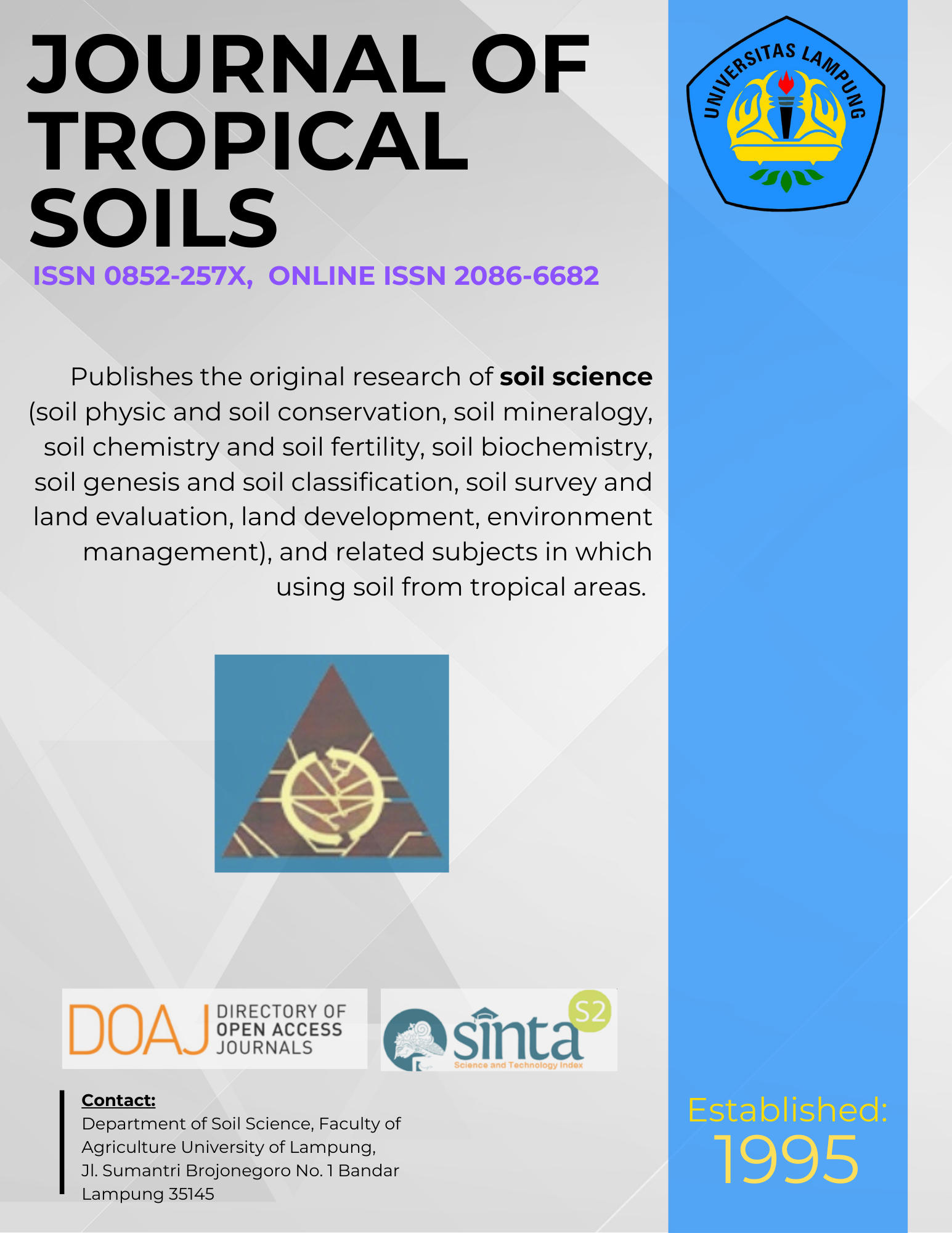Dissolution Kinetics of Milled-Silicate Rock Fertilizers in Organic Acid
Main Article Content
Abstract
A dissolution experiment was carried out to identify the effects of milling condition on dissolution kinetics of silicate rock fertilizers. Initially ground materials (Ø < 250 μm for basalt, dolerite, gneiss, and Ø < 150 μm for K-feldspar) were further milled with a ball mill (Spex 8000) under dry and wet conditions for 10, 60, and 120 minutes. The rock powders were dissolved in a mixture of 0.01M acetic-citric acid at a rock powder/solvent ratio of 1/1000, and the solution was agitated continuously on a rotary shaker at 25o C. The concentrations of dissolved Na, K, Ca, Mg, Al, and Si from the milled rocks were determined at intervals from 1 hour up to 56 days. Results indicated that the relationships of quantity of dissolved rock and elemental plant nutrients (Et) with time (t) were well described by a power equation: Et = Eo + atn with reaction order (n) of 0.3 – 0.8. Milling increased quantity of total and individual dissolved element (Et ), dissolution rate (Rt), the proportion of rapidly soluble rock or element (Eo), and dissolution constant a. The increases in dissolution due to dry milling were larger than for wet milling. Although further proves should be provided, results of this dissolution experiment clearly indicates that SRFs may be used as multinutrient fertilizers as well as remedial materials for acidic soils; and dry milling may be applied as an appropriate method for manufacturing effective SRFs.
Downloads
Article Details
Section
License for Authors
Authors who publish with this journal agree to the following terms:
- Authors retain copyright and grant the journal right of first publication with the work simultaneously licensed under a Creative Commons Attribution License that allows others to share the work with an acknowledgement of the work's authorship and initial publication in this journal.
- Authors are able to enter into separate, additional contractual arrangements for the non-exclusive distribution of the journal's published version of the work (e.g., post it to an institutional repository or publish it in a book), with an acknowledgement of its initial publication in this journal.
- Authors are permitted and encouraged to post their work online (e.g., in institutional repositories or on their website) prior to and during the submission process, as it can lead to productive exchanges, as well as earlier and greater citation of published work (See The Effect of Open Access).
License for Regular Users
Other regular users who want to cite, distribute, remix, tweak, and build upon author’s works, even for commercial purposes, should acknowledge the work’s authorship and initial publication in this journal, licensed under a Creative Commons Attribution License.

